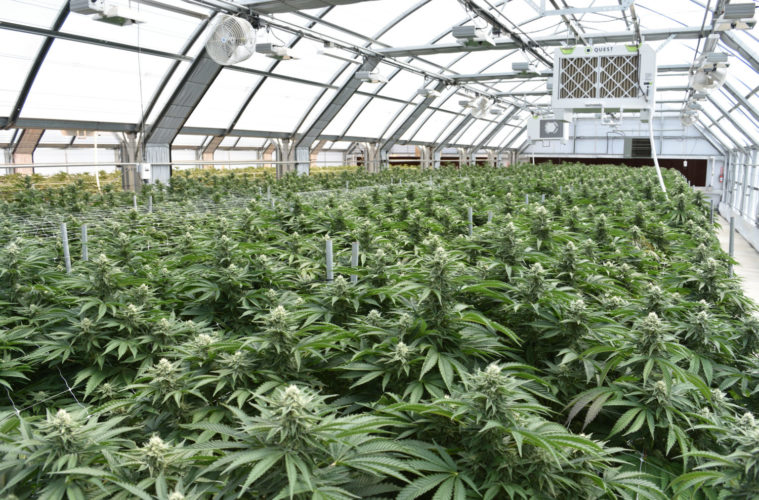The April showers have come and gone, the supplemental lighting is being flicked off in some crazy greenhouses, and the pot is ready to grow. It’s time to get your backyard ready to grow your own hype this year and we talked with the experts to help start you down the path to trichrome-soaked glory.
Make no mistake about it, growing your own weed is awesome. The more time you put in, the greater the rewards. And when you are talking about keeping six plants in primo condition for the season, you’re not talking about a lot of time. If it’s time well spent.
We want to make sure we’re putting Los Angeles in a position to have the best backyard weed possible. The local talent pool is already filled with above-average green thumb talent and there’s plenty of timeless material out there reminding you to pick a spot where your plants get enough sun and do not overwater. This allowed us to dive into the more specific subject matter with our experts.
Soil
We started our chat with the Soil King himself, Patrick King. King’s Cloverdale garden supercenter is the last stop in Wine Country for many heading north to the hills of the Emerald Triangle. For years, countless pros have used King’s products as their medium of choice for the growing season. In addition to that, King now serves as the post-production processing instructor for the Ganjier course, which has the ethos of a weed sommelier program.
“With an annual plant, or cannabis or whatever it is, if you start with the right medium that already has a balanced diet, you’re going to be way better off than having to add a bunch of things all the way through the process,” King told L.A. Weekly.
While a lot of people believe the cultivation process is personally rewarding just in terms of accomplishment, King notes that if you aren’t taking care of the plants properly, then that extra bit of joy may not matter.
“If you’re producing flowers, if you’re producing any type of edible, tomatoes or celery, what you feed your soil, you’re feeding your soul,” King said. “So it’s very important to start off with essentials and a healthy product that is tested and doesn’t have contaminants, toxicities, pesticides or heavy metals.”
King emphasized that everything you grow out of that soil is going to absorb any nastiness up through the plant. And in addition to the spiritual damage, things like colonies of bacteria could present problems.
If you want to do it right, it’s never been easier to create your own little horticulture-themed microbial universe to get your plants popping chemical-free.
“If you look at the big market, media, chemical fertilization and all the things that they’ve told us to do 15 years ago to now, you are depleting and killing everything that is good in the soil,” King said. “Meaning your bacteria is just like a slug. You pour salt on a slug what happens? Shrivels up and dies, right? You need that bacteria in your gut, and you need that bacteria in your soil to do the job.”
King argued it’s so much simpler to spend a little bit more on quality inputs and some biology. Then let that do the job and be proud of what you’re cultivating versus having to chase problems because you don’t have that biology and defense system underneath the soil warding off all the diseases.
King also spoke to how many people have soil that is way too compact. Water puddling up on top when you hydrate the plants is a big warning sign your soil is too compact for the plants to maximize their efforts.
“That’s your first clue that you are drowning your roots zone,” explained King. “Those roots, in an annual plant, have six, seven months of growth and they have to do the biggest job they possibly can do in a short amount of time. And just like us, you can have the best diet, you can have the best health bars and water. You can go to Swiss Alps and go hiking but when you run out of oxygen? It doesn’t matter what food source, it doesn’t matter how healthy you are, doesn’t matter how physically fit you are because you’ve just depleted your oxygen level and you are done, same with our plants.”
How Hype? How Big?
Preferred Gardens’ David Polley built out some of the nicest indoor cultivation rooms we’ve ever seen – his latest get their first plants later this month. Additionally, Polley’s greenhouse setup looks like what we imagine Elon Musk will be shooting for on Mars. Everywhere looks gorgeous and spotless like some kind of final boss for an OSHA Inspector.
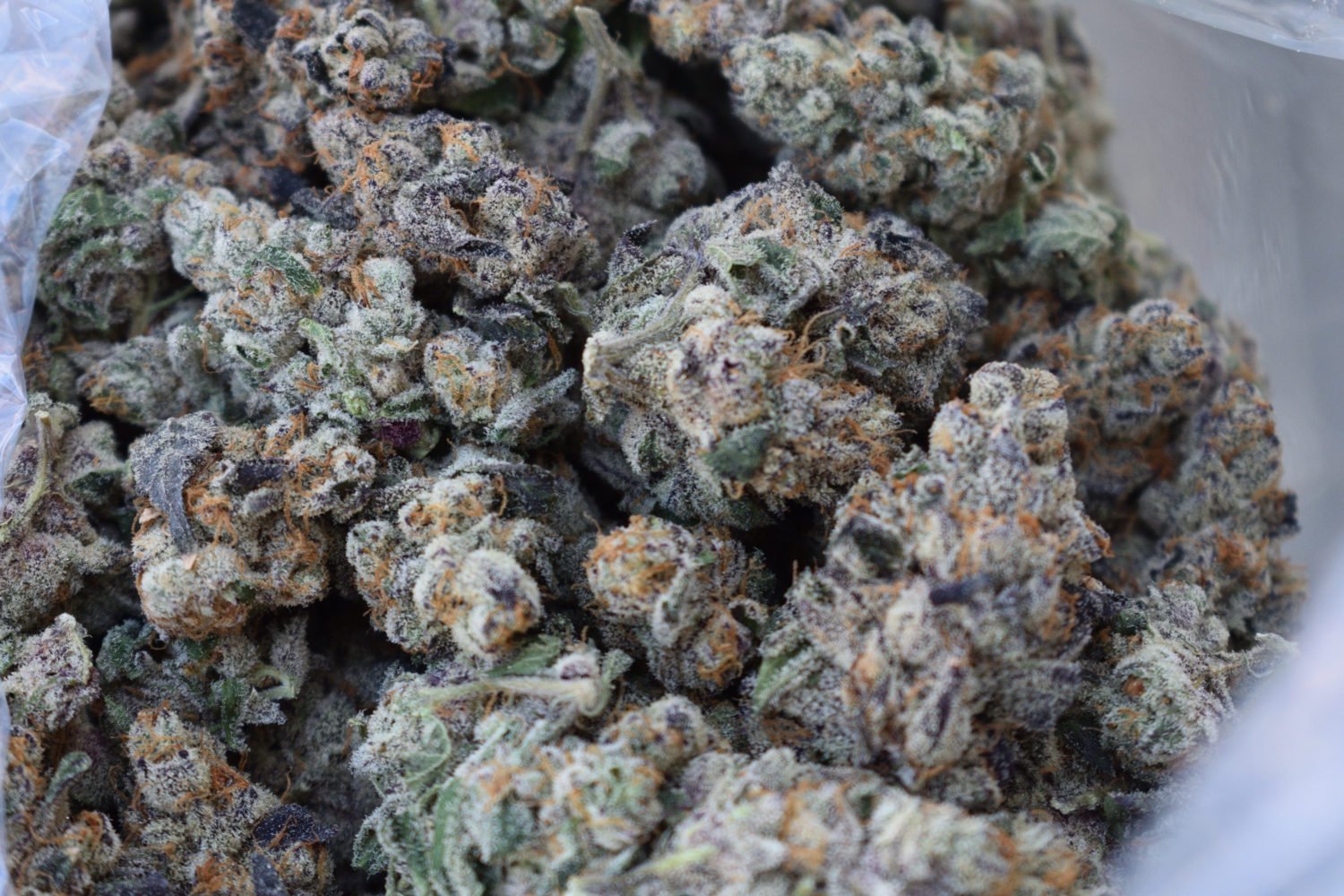
L.A. Kush Cake
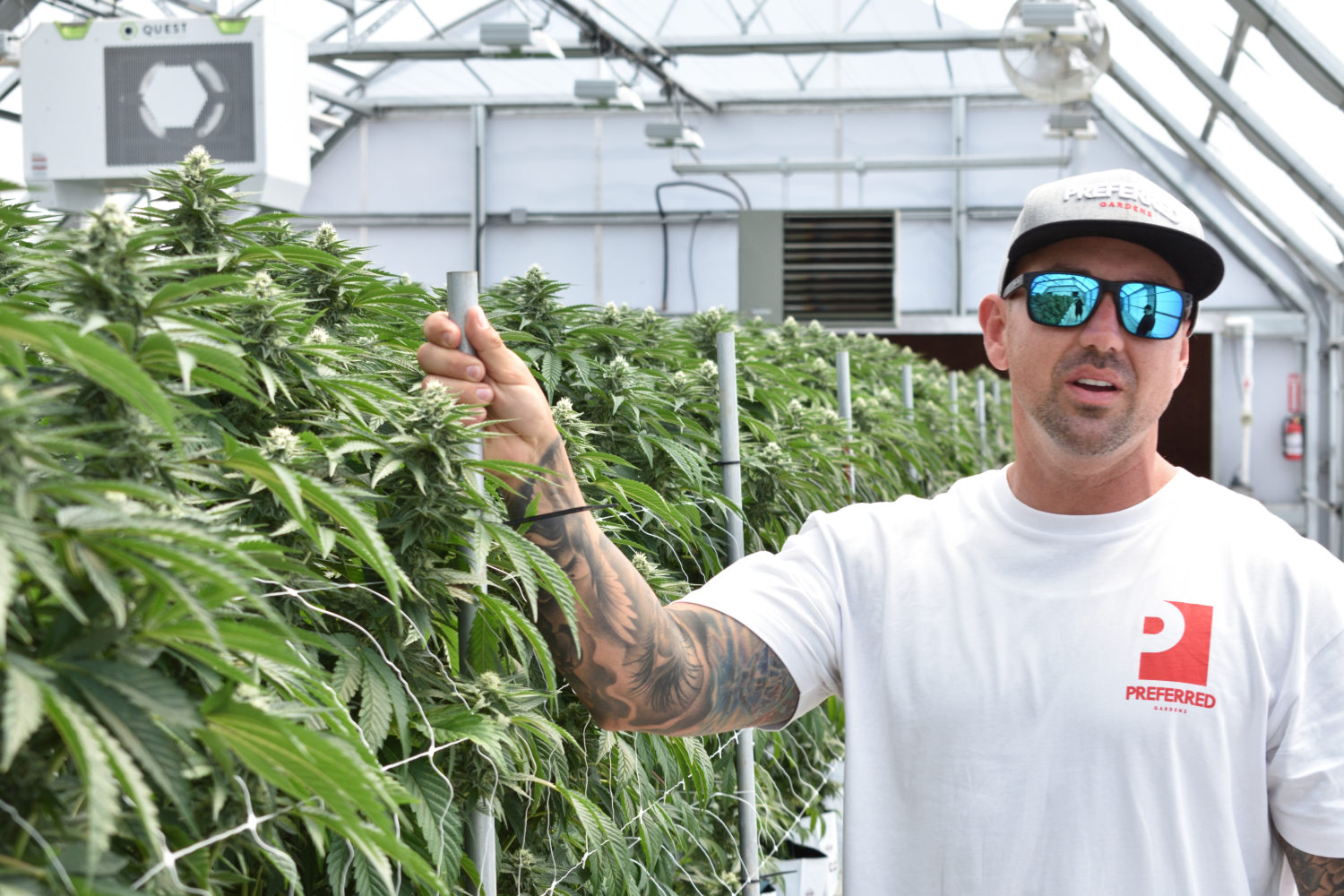
Polley in the garden.
Polley’s biggest frustration is convincing novice growers that they don’t need to spend a ton of money on nutrients to maximize their results. “All these nutrients that everyone’s buying – all the stickered marketed nutrients – that is really just the same thing that you can buy for anything for 100 years. It’s like the AG salts, you know?” Polley told L.A. Weekly.
We asked Polley if he thought people don’t realize how simple they can really keep it.
“Definitely,” Polley replied, arguing a lot of nutrient lines were just agricultural salts. “They’re just using agriculture products that you would grow poinsettias or anything else with, and they’re saying it’s a custom mix for cannabis, and they mark it up 2,000%.”
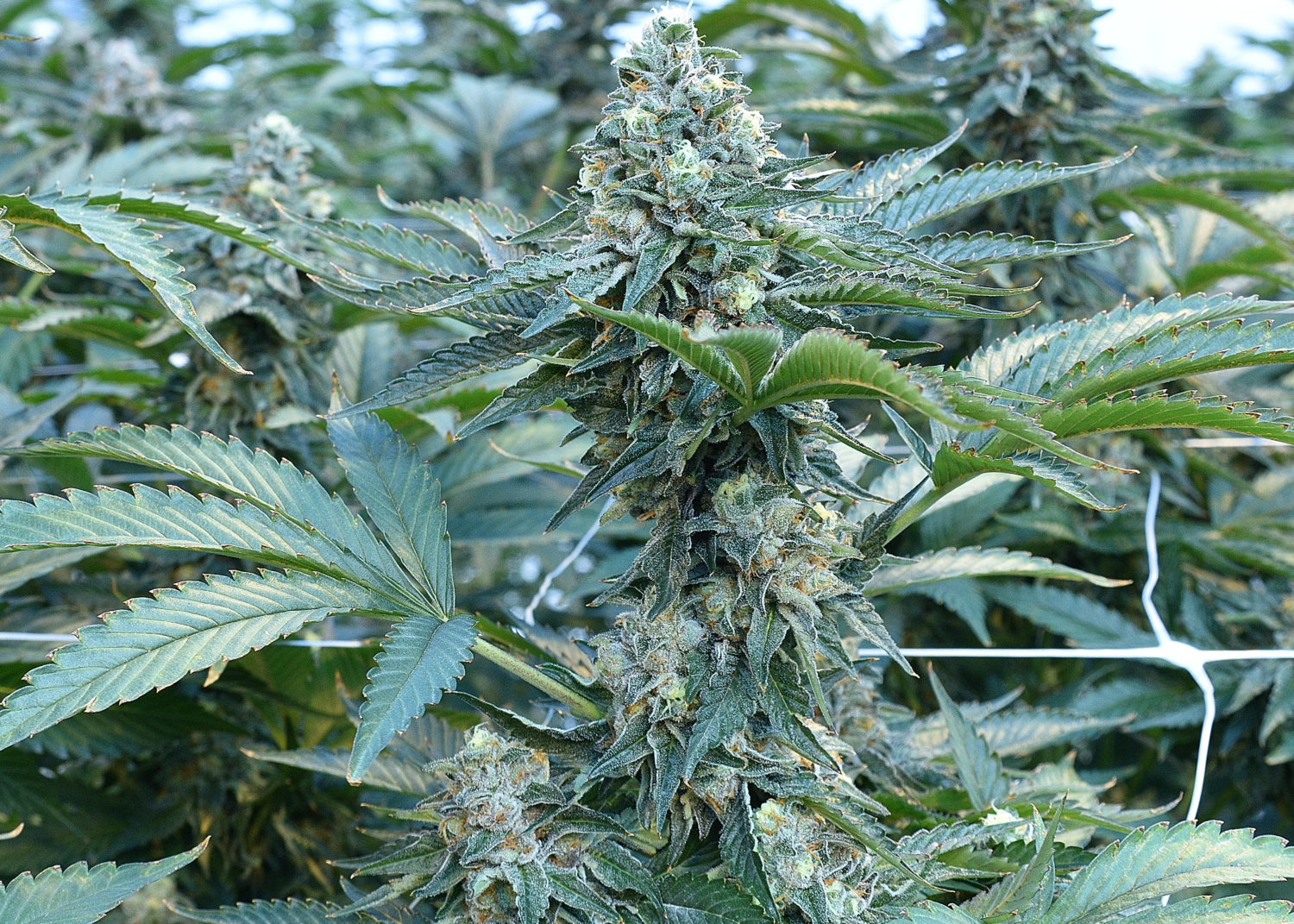
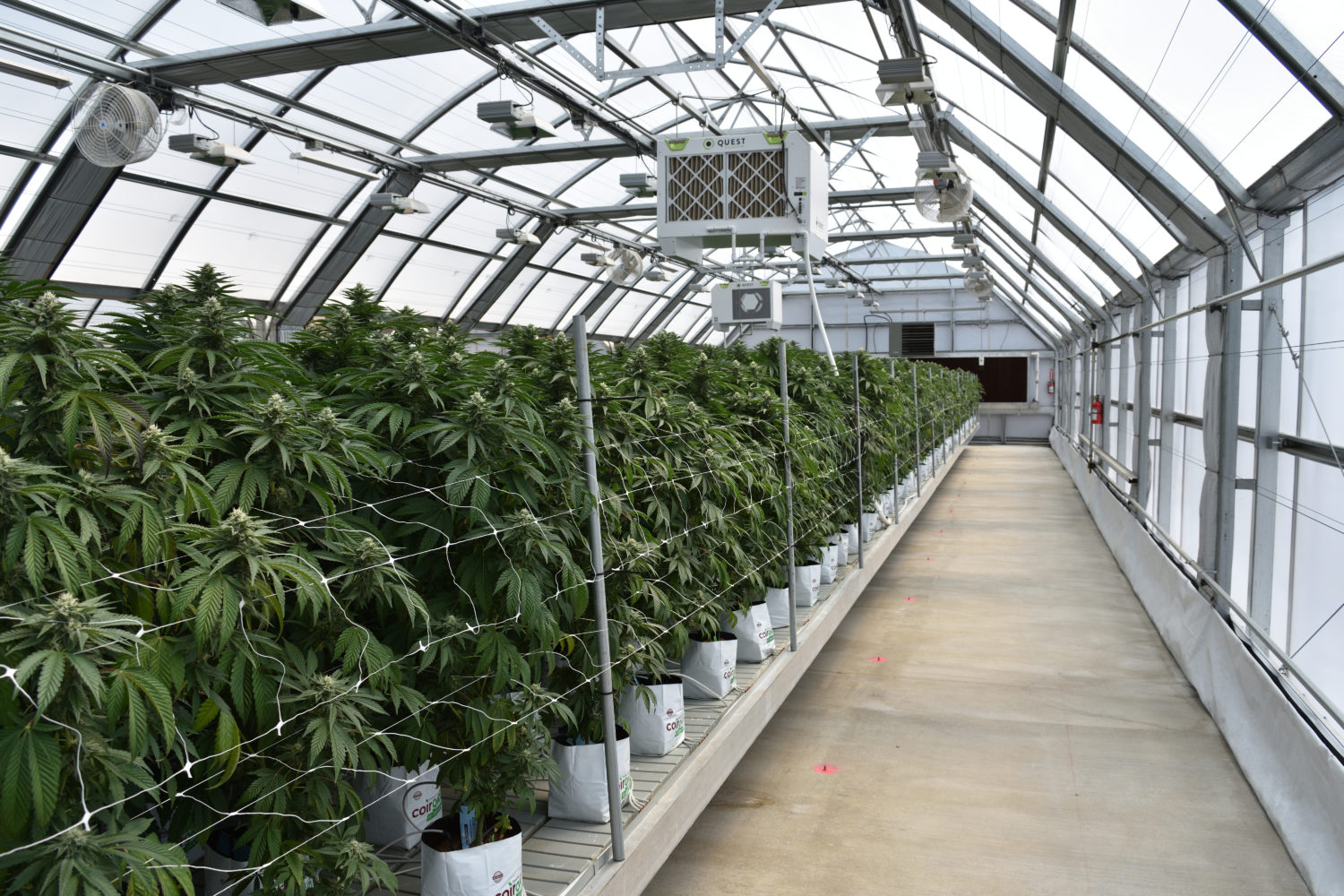
Polley thinks most people get suckered into all these additives and everything else.
“It just bothers me. I think I need to help a lot of people in that aspect because, like every farm that I go to, people are spending two or three dollars for a gallon of concentrated solution. What you really should be spending is like eight cents,” Polley said.
With a little education, a small garden won’t have to break the bank. There is a little research to be done, but it will be well worth the results.
On the actual production side, Polley also thinks people focus on dry-downs.
“The plants need to dry down properly for them to uptake nutrients the following day,” he said. “Plants should be fed two hours after sunrise ‘lights on’ and the last feeding of the day should end four hours before ‘lights off’ sunset.”
We asked Polley how big he would go on the pots if he were putting six plants in his grandmother’s yard at her request?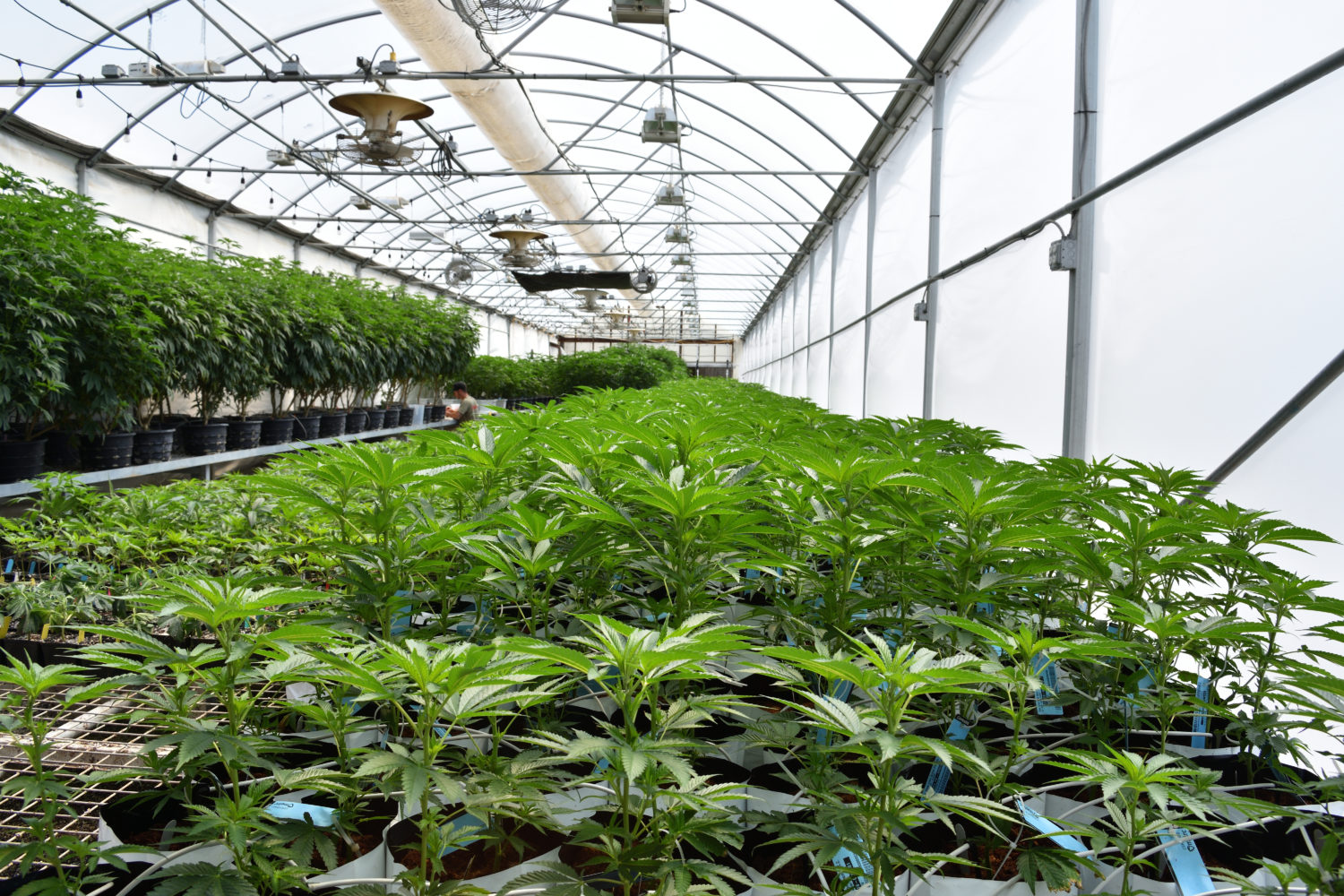
“I wouldn’t go more than 30 gallons,” Polley replied. “Honestly, you don’t need more than that.”
He pointed to his own greenhouse where he uses one-gallon bags and gets big plants. Things can get huge if you know what you’re doing.
“A lot of people do these massive 100-gallon pots, which I did 15 years ago, when I didn’t know as well,” Polley said. “It’s a complete waste. Just get a little more educated on how to grow in that 30 gallons and how to regenerate the roots and such, and you can grow the most beautiful plant in 30 gallons. That’s more than you would ever need.”
The Genetics
There are few people on the planet with more coveted genetics than Brandon Parker of 3rd Gen Family and Dying Breed Seeds. Just ask any of the A-list rappers using genetics that trace back to his seeds.
“I mean, if you got six plants, you really, really got to plan for success from the get-go. Because you’re already at a disadvantage to most large-scale growers,” Parker told L.A. Weekly, noting the few opportunities the backyard cultivator has to be successful.
Big gardens have a lot more chances to get it right. if the novice home-grower gets all bummer genetics, they’ll never get the opportunity to maximize their effort. The first thing they should shoot for is something unique. Even if it turns out B+, being unique will add a bit to the experience since so much of the marketplace is similar dessert, garlic or straight gas terps at the moment.
“If you really want to get in, and grow in something cool, the first thing is to get something different,” Parker said. “That’s what I always try to do. Grow stuff that not everybody else has got in their bag, with a different name on it.”
Parker noted one of the best ways to ensure a lot of variety in your pack is making sure all the plants don’t have the same parents. Parker also theorized some of the flavors we’re seeing over and over in the marketplace might hit a European royalty-esque genetic bottleneck from continually being bred with cousins.
Parker said one safe bet, if working from seed, is to get your genetics from companies that have been on the market for at least five years. He argues in that timeline any real frauds would have shown themselves as such, and most of the newer companies are just working with genetics from those companies anyway.
“Back in the day, 80%, 90% of all people were farmers, right? And so we all have a green thumb inside of us. And just keep it simple. Keep it organic. That’s it. Have fun with it,” Parker said.
Advertising disclosure: We may receive compensation for some of the links in our stories. Thank you for supporting LA Weekly and our advertisers.

